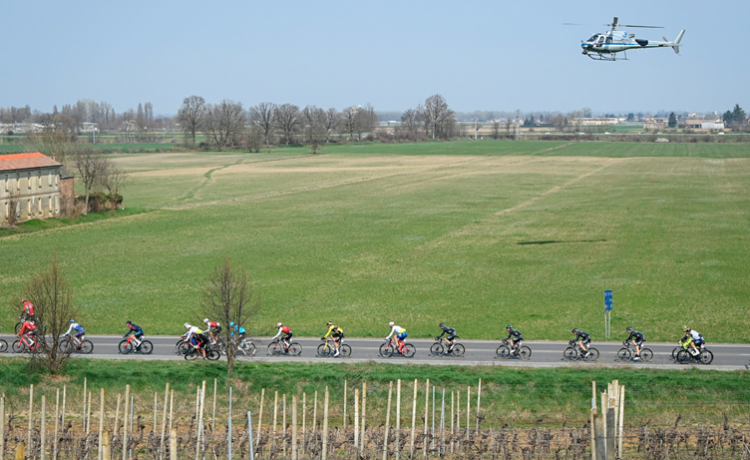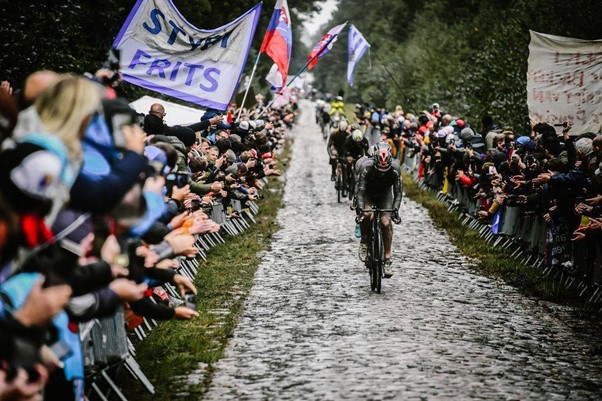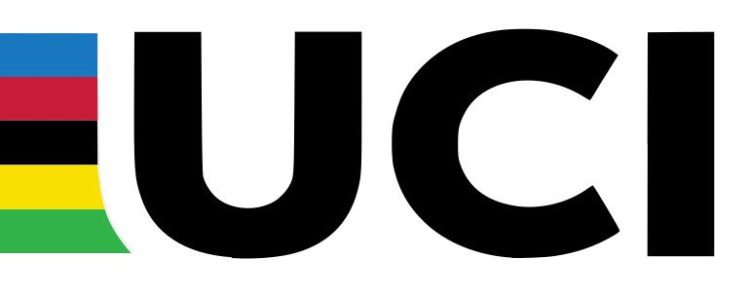Cycling’s Monuments Explained
By Tim Perkin
In professional road cycling, there are five classic one-day races which are considered the oldest, hardest, longest and most prestigious and are referred to as “Monuments.” Next to winning a Grand Tour such as the Tour de France, or Giro d’Italia, these are viewed as one of the most prestigious events that a cyclist can win.
The five classic one-day races are Milan-San Remo, which takes place in Italy; the Tour of Flanders, or Ronde van Vlaanderen in Dutch as it is known, takes places in Flanders, Belgium. The most prestigious is Paris–Roubaix, which takes place in France. Liège–Bastogne–Liège is the oldest of the Monument’s and occurs on the roads of Belgium, whilst the final Monument, Giro di Lombardia, or Il Lombardia, is held at the end of the cycling calendar, in late September or October, in Italy and is referred to as “Race of the Falling Leaves.”
The word “Monument” was first used in road cycling on April 17th 1949, the day of the 47th Paris-Roubaix race. French sports writer Albert Baker d’Isy, wrote an article called “Paris-Roubaix: ‘monument’ du cyclisme” and it was published in the French newspaper “Ce soir” and the phrase “Monument” has stayed in the cycling vocabulary until today.
Of the five Monuments, four are hosted in March and April.
Milan-San Remo, 16th March 2024
Milan-San Remo is the first Monument of the year and has been won by some of the greatest sprinters in history including Mark Cavendish in 2009. The list of winners includes former World Champions such as Italian Paolo Bettini, Michal Kwiatkowski, and Julian Alaphilippe, as well as Grand Tour Champion, Vincenzo Nibali. Belgian Eddy Merckx holds the record number of wins with seven.

Photo Credit: Milano-San Remo
This is traditionally the longest Monument, and the 2024 edition is 288km long and has been quoted as the “Sprinter’s Classic” due to mainly flat road. However, there is a decisive climb called the Poggio di San Remo, with an average gradient of 3.6% and is 3.7Km long and comes at the end of nearly 300km of riding. It has been the point where riders attack and try and breakaway to the finish, as it was the case with Vincenzo Nibali. He attacked on the decisive climb and went on to win the 2018 edition.
Sprinter, Jasper Philipsen, from team Alpecin–Deceuninck won the 2024 race, with help from teammate and 2023 winner, Mathieu van der Poel.
Tour of Flanders, 31st March 2024
This race dates back to 1913, and the 2023 edition, 273.4km long, was won by Tadej Pogačar. Earlier winners include Fabian Cancellara and the Belgium legend, Tom Boonen.
This year’s edition is said to be 270.8km long, starting in Antwerp and finishing in Minderbroedersstraat in Oudenaarde. Along the route there, are tough climbs such as Oude Kwaremont, 2.2km long of which 1.5km is cobblestones (cobbles), naturally rounded rocks (referred to locally as pavé).
This is one of the unique elements of this race, as along with Paris-Roubaix, there are sections of the course where the road surface is formed of cobbles which adds an extra effort for the riders. This is a 6-hour race of endurance in quite difficult weather conditions.
Paris–Roubaix, 7th April 2024
This race is historic as it comes, with the first edition taking place in 1896 and 280km in length. Due to its history, it is considered as the “Queen of the Classics”, but its difficulty has earned it the nickname the “Hell of the North.”
Over the years, the distance of the course has varied and is now roughly 260km in length. In 2023, it was 256.6km long and was won by Mathieu van der Poel. Belgian riders, Roger De Vlaeminck and Tom Boonen hold the record for the greatest number of wins – four.

Photo credit: Paris-Roubaix
Like the Tour of Flanders, there are sections of cobbles which vary in lengths, making this a challenging ride and a real test of endurance.
Since 1943, the finish of the race has been held in the Roubaix Velodrome making it one of the most iconic.
Liège–Bastogne–Liège, 21st April 2024
This is the oldest Classic that started in 1892 and takes place in Belgium. Belgian Eddy Merckx has the greatest number of wins, with a total of five.
Previous winners of the race include Grand Tour riders such as Andy Schleck, Alejandro Valverde and Primož Roglič. The reason is because the route has many climbs which are suited to Grand Tour riders. The race is 259km long.
Il Lombardia, 12th October 2024
This is the final Monument, and it is held in northern Italy, in October or late September. It has gone through several name changes over the years until being referred to as “Il Lombardia” starting from 2012. For many it is considered as the “Autumn Classic.”
Two earlier editions (2022 & 2023) have been won by Tadej Pogačar. Due to the number of climbs involved, it is well suited to climbers by nature and past winners including Italian Grand Tour winner, Vincenzo Nibali and the legendary Irish, Sean Kelly. The race’s 2023 edition started in Como and finished in Bergamo, 238km long route with a colossal 4400 meters of climbing. It is expected to be almost the same route and difficulty in 2024 with Tadej Pogačar attempting to take three wins in a row, and match the great Fausto Coppi, who took the podium five times, of which four were consecutive from 1946 to 1949.
Summing up
The Monuments, along with the Grand Tours, are the pinnacle of road cycling and to win one is an incredible achievement. These are uniquely difficult races and to date, there have only been three cyclists to ever win all five: Rik Van Looy, Eddy Merckx, and Roger De Vlaeminck. Can someone from the new generation of cyclists win all five? With Tadej Pogačar on three (Tour of Flanders, Liège–Bastogne–Liège and Il Lombardia) he would be the most likely, only time will tell, but we will watch on with interest.
—
About the Author
Tim has a passion for cycling and it was integral to regaining fitness after an arduous battle with cancer. Tim is the founder of Mountain Massif, who host esports cycling events. Over the years, Tim has written about a range of cycling topics, including testing and reviewing the major smart trainers. In addition, he has been fortunate to ride and interview some of the sports leading figures such as Tour de France winner Andy Schleck and sprint legend André Greipel.






















